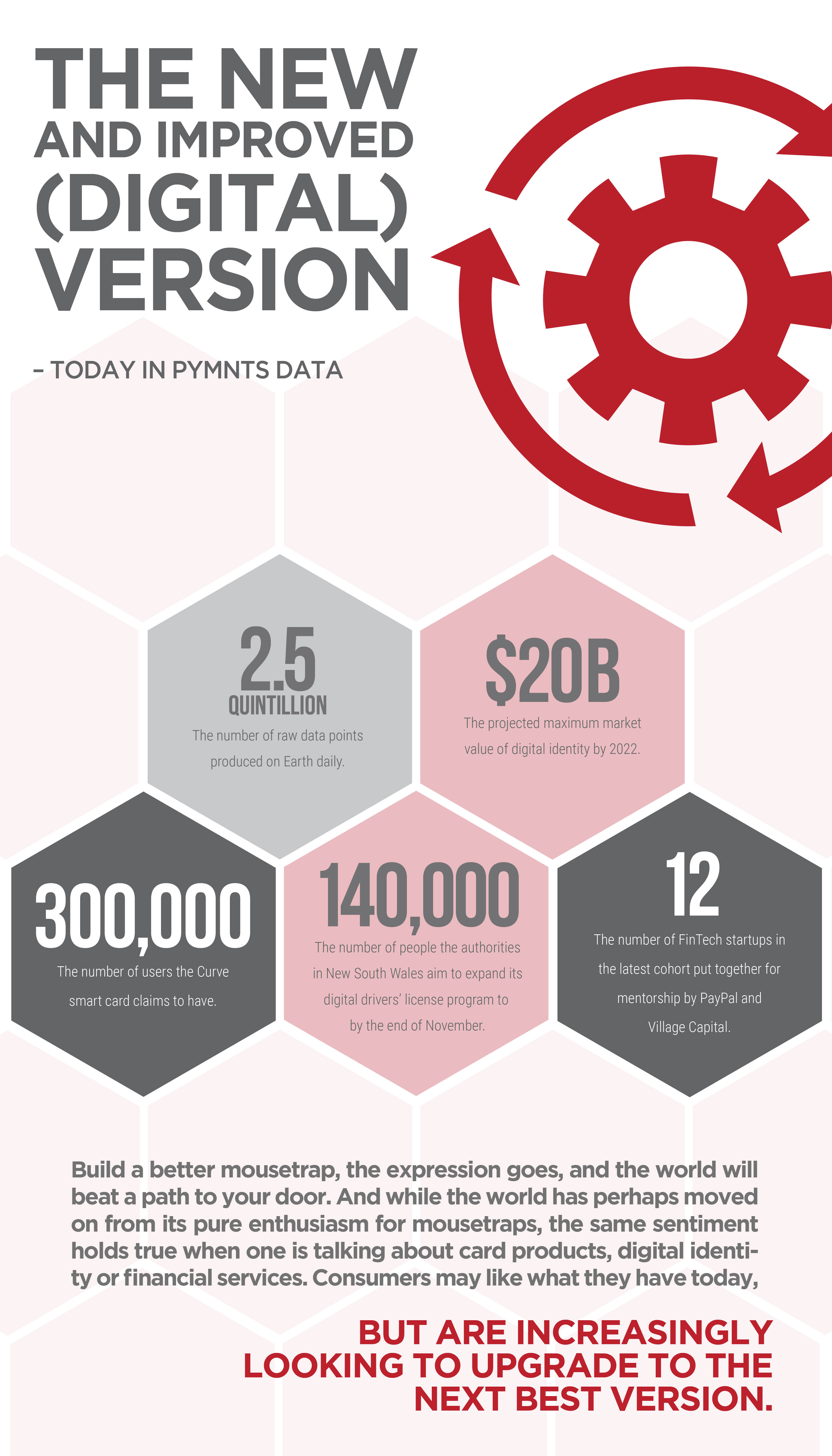
While innovation and advances are often expected to appear in explosive, disruptive form – as often as they seem to appear out of nowhere full formed – more really good ideas actually evolve over time. The first few generations of all-in-one smart credit cards crashed and burned, but the U.S. Curve seems have found a workable formula. Drivers’ licenses work fine, but Australians are test-driving digital ones to see if they work better. Building access to digital identity worldwide has gone from a handful of projects to an increasingly active market, where a plethora of players are competing all over the world to use data and digitization to build a verifiable identity for consumers, wherever they happen to be.
 Data
Data
2.5 quintillion: The number of raw data points produced on Earth daily.
$20 billion: The projected maximum market value of digital identity by 2022.
300,000: The number of users the Curve smart card claims to have.
140,000: The number of people the authorities in New South Wales aim to expand its digital drivers’ license program to by the end of November.
12: The number of FinTech startups in the latest cohort put together for mentorship by PayPal and Village Capital.